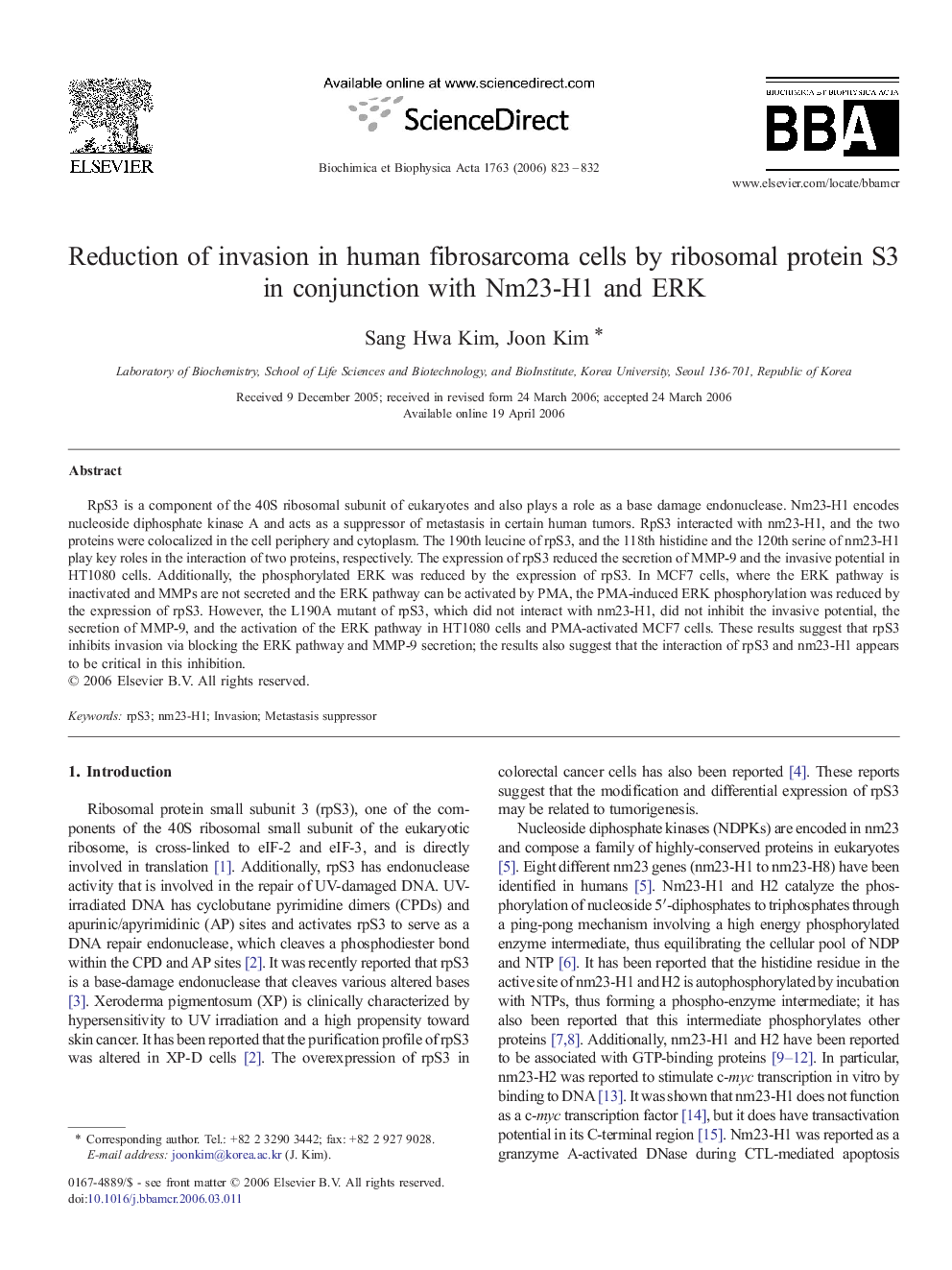| Article ID | Journal | Published Year | Pages | File Type |
|---|---|---|---|---|
| 1951696 | Biochimica et Biophysica Acta (BBA) - Molecular Cell Research | 2006 | 10 Pages |
RpS3 is a component of the 40S ribosomal subunit of eukaryotes and also plays a role as a base damage endonuclease. Nm23-H1 encodes nucleoside diphosphate kinase A and acts as a suppressor of metastasis in certain human tumors. RpS3 interacted with nm23-H1, and the two proteins were colocalized in the cell periphery and cytoplasm. The 190th leucine of rpS3, and the 118th histidine and the 120th serine of nm23-H1 play key roles in the interaction of two proteins, respectively. The expression of rpS3 reduced the secretion of MMP-9 and the invasive potential in HT1080 cells. Additionally, the phosphorylated ERK was reduced by the expression of rpS3. In MCF7 cells, where the ERK pathway is inactivated and MMPs are not secreted and the ERK pathway can be activated by PMA, the PMA-induced ERK phosphorylation was reduced by the expression of rpS3. However, the L190A mutant of rpS3, which did not interact with nm23-H1, did not inhibit the invasive potential, the secretion of MMP-9, and the activation of the ERK pathway in HT1080 cells and PMA-activated MCF7 cells. These results suggest that rpS3 inhibits invasion via blocking the ERK pathway and MMP-9 secretion; the results also suggest that the interaction of rpS3 and nm23-H1 appears to be critical in this inhibition.
